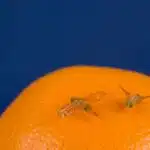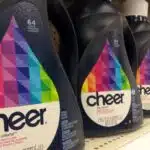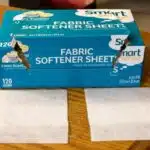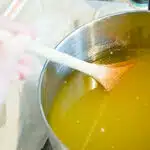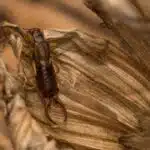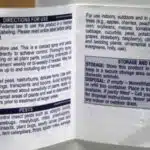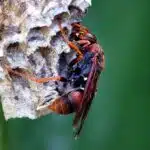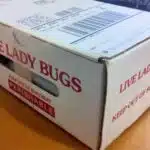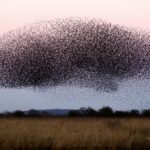Insects have been an integral part of our environment since the beginning of time. They play a vital role in the ecosystem, pollinate crops, and control populations of other pests. However, some insects can be harmful to human health and cause damage to property. Flies are one such insect that can cause significant annoyance, especially during the summer months. Fly paper is a simple and effective way to control the number of flies in your home or workplace. In this article, we will discuss how to make your own fly paper using natural ingredients.
The use of fly paper dates back to ancient times when it was made from strips of bark or leaves coated with sticky substances such as honey or resin. Today, most commercial fly papers are made from chemical compounds that may harm both humans and pets if ingested. Therefore, making your own fly paper using natural ingredients is not only cost-effective but also safer for you and the environment. Moreover, by creating your own fly paper, you can customize it according to your needs and preferences. So let us delve into this topic and learn how to make homemade fly paper effectively!
The Importance Of Fly Control
Fly control is an essential aspect of maintaining a healthy and hygienic living environment. The benefits of fly control are numerous and far-reaching, ranging from reducing the spread of diseases to preventing food contamination. Flies are known carriers of a wide variety of pathogens, including bacteria and viruses, which can cause illnesses such as diarrhea, cholera, and typhoid fever. Therefore, controlling their population is crucial.
Apart from the health hazards posed by flies, they can also be a nuisance in homes and businesses. They can interrupt activities with their buzzing sounds or land on surfaces such as food and drinks, rendering them unsafe for human consumption. Additionally, the presence of flies may be indicative of poor sanitation practices or unclean surroundings. Hence, it is essential to maintain proper hygiene levels at all times to prevent infestations.
Although fly control methods have evolved over time, some traditional techniques remain effective today. Fly paper is one such method that has stood the test of time. It is a simple yet effective way to trap flies without using harmful chemicals that could harm humans or other beneficial insects. In the subsequent section, we will delve into the history of fly paper and its evolution over time to understand better how it works.
The History Of Fly Paper
The Importance of Fly Control cannot be overstated, as flies are known to carry a variety of pathogens that cause serious health problems. Insects like flies have different ways of being controlled, and one of the effective ways is using fly paper as an insect repellent. Fly paper is a sticky trap that attracts and captures flies, preventing them from breeding and spreading diseases.
There are different types of fly papers available in the market, each with unique features. The most common type is the ribbon-style fly paper that comes in rolls or strips coated with adhesive substances. Another type is the tube-style fly paper that has a tube-like structure filled with an attractant, such as sugar or honey, to lure flies into it.
Despite the availability of commercial fly papers, many people still choose to make their own fly paper. Some reasons for this include cost-effectiveness, customization, and environmental friendliness. Making your own fly paper can also be a fun DIY project and provide a sense of satisfaction knowing that you are taking control of your environment by repelling insects naturally.
Why make your own fly paper? There are several reasons why making your own fly paper could be beneficial. First, you can control what ingredients go into it and customize it based on your preferences. Second, it can be more cost-effective than buying commercial options in bulk. Third, making your own fly paper can be an enjoyable activity or project for those interested in DIY projects or homesteading practices. Ultimately, whether you choose to make your own or purchase commercial options, using natural methods to repel insects such as flies can improve quality of life by reducing exposure to harmful pathogens they may carry.
Why Make Your Own Fly Paper?
Benefits of Making Your Own Fly Paper
Fly paper is an effective tool for controlling houseflies and other flying insects. It works by attracting the insects to a sticky surface, where they become trapped and unable to escape. While commercial fly paper is readily available, making your own fly paper has several benefits.
Firstly, homemade fly paper can be made with natural ingredients that are safer than the chemicals used in commercial products. This means that it is less harmful to both humans and the environment. Secondly, making your own fly paper allows you to customize the size and shape of the strips to suit your needs. You can make larger or smaller strips depending on the area you want to cover or cut them into different shapes if you prefer.
Lastly, making your own fly paper is a cost-effective solution for controlling flies and other flying insects. Commercial products can be expensive, especially if you need to use them frequently or over a long period of time. By making your own fly paper, you can save money while still maintaining effective control over these pests.
- Natural Ingredients for Homemade Fly Paper:
When it comes to making your own fly paper, there are various natural ingredients you can use instead of chemical-laden options found in commercial products. Here are two sub-lists of some natural ingredients and their benefits:
Sugar: Sugar is a common ingredient in homemade fly paper as it attracts flies with its sweet scent.
Molasses: Molasses can be added to sugar syrup mixture as it has a strong aroma that attracts flies.
Honey: Honey is another sweet ingredient that can attract flies effectively.
Vinegar: Vinegar has acidic properties that help break down insect exoskeletons and makes the adhesive stickier.
Apple Cider Vinegar: Apple cider vinegar has a distinctive smell that attracts flies while also being antibacterial.
White Vinegar: White vinegar is easily accessible and inexpensive which makes it an ideal ingredient for making homemade fly paper.
By using natural ingredients, you can ensure that your homemade fly paper is both effective and safe for use around your family and pets. With a little creativity, you can create a customized solution that meets your needs while saving money in the process.
Natural Ingredients For Homemade Fly Paper
Sugar is a common ingredient used in homemade fly paper recipes, due to its attractive properties to many species of flies. Vinegar, essential oils, and glue are also ingredients that can be added to enhance the effectiveness of the fly paper. Brown paper can be used as the material for the fly paper, with ribbon or string used to secure it and hang it in the desired area. Cooking oil, water, and fruit juice can be combined to create an adhesive for the paper. Herbs, citrus peels, honey, beer, balsamic vinegar, and corn syrup can be added to the mixture to create a more effective fly attracting solution.
Sugar
Sugar is a common ingredient in DIY fly paper recipes due to its ability to attract and trap flies. However, for those who want to avoid using sugar, there are alternative ingredients that can be used as fly attractants. One such alternative is honey, which has a similar sweet smell and stickiness that can effectively lure in flies.
Another option for those seeking sugar alternatives is using fruit juices or extracts, such as apple cider vinegar or lemon juice. These liquids contain natural sugars that can attract flies, while also providing a tangy scent that can further entice them. Additionally, adding essential oils like lavender or eucalyptus can help repel other insects while still attracting flies.
When creating homemade fly paper with sugar or any of these alternatives, it’s important to remember the right ratio of ingredients and how much water should be added for the mixture to become sticky enough to trap flies. Experimenting with different ingredients and ratios can lead to the perfect DIY fly paper recipe tailored to one’s specific needs and preferences.
Vinegar
Vinegar is another natural ingredient that can be used in DIY fly paper recipes. As an entomologist, I have observed that flies are attracted to the acidic smell of vinegar. Adding vinegar to a mixture of water and sugar or honey can increase the effectiveness of the fly paper in trapping flies.
Aside from its use in fly paper, vinegar is also commonly used for cleaning and cooking. Its acidity makes it an effective cleaner for surfaces such as countertops and floors, as well as a natural disinfectant. In cooking, vinegar is often used as a flavoring agent or marinade for meats and vegetables.
When using vinegar in a DIY fly paper recipe, it’s important to dilute it with water first to prevent the mixture from becoming too acidic and repelling flies instead of attracting them. A ratio of one part vinegar to four parts water is recommended. Experimenting with different amounts of vinegar and other ingredients can lead to the perfect combination for effective homemade fly paper.
Essential Oils
Another natural ingredient that can be used in DIY fly paper recipes is essential oils. Essential oils are highly concentrated plant extracts that have various benefits and uses, including as insect repellents. Many essential oils, such as peppermint, eucalyptus, and citronella, are known for their ability to repel flies and other insects.
To use essential oils in a homemade fly paper recipe, simply add a few drops of the oil to a mixture of water and sugar or honey. Alternatively, the oil can be applied directly onto strips of paper or cardboard to create a simple yet effective fly repellent. The benefits of using essential oils over chemical insecticides include their natural origin, pleasant scent, and non-toxicity to humans and pets.
The usage of essential oils in DIY fly paper recipes is an easy and affordable way to combat pesky flies without resorting to harmful chemicals. Experiment with different types of essential oils and combinations to find the most effective recipe for your needs. By utilizing natural ingredients like vinegar and essential oils, we can create effective solutions while also promoting sustainability and environmental consciousness.
Choosing The Right Paper For Your Fly Traps
Did you know that the texture and thickness of paper can greatly affect its effectiveness as a fly trap? It’s true! In fact, studies have shown that thicker papers with rougher textures tend to be more effective at trapping flies than thinner, smoother papers. This is because the rough texture provides a surface for flies to stick to, while the thickness ensures that the paper won’t tear or break under the weight of trapped insects.
When choosing the right paper for your fly traps, it’s important to consider both eco-friendliness and cost-effectiveness. While some types of paper may be more environmentally friendly, they may also be more expensive or harder to find. On the other hand, cheaper papers may not only be less effective at trapping flies but could also contribute to environmental harm if not disposed of properly.
Ultimately, finding the perfect balance between thickness, texture, eco-friendliness, and cost-effectiveness will depend on your individual needs and preferences. It may take some trial and error before you find the right type of paper for your homemade fly traps. However, with a little patience and experimentation, you’ll soon be on your way to successfully catching those pesky insects.
As we’ve seen, choosing the right paper is an important step in creating effective fly traps. However, it’s not enough just to have high-quality paper – you need to prepare a sticky mixture that will attract and trap flies. So how do you make this mixture? Read on to learn about the different ingredients you can use and how to create a successful fly-catching concoction.
Preparing The Sticky Mixture
To prepare the sticky mixture for fly paper, it is important to gather all the necessary ingredients. The key ingredient is a sticky substance that will trap the flies. There are several options for this, including honey, corn syrup, or even petroleum jelly. Once you have chosen your sticky substance, you will also need to mix in a few additional ingredients to create the right consistency.
To begin mixing your ingredients, start by heating up your sticky substance of choice on low heat. This will make it easier to mix in other ingredients and help create a smoother consistency. While it’s heating up, add in a small amount of water and stir until it’s fully combined. This will help thin out the mixture and make it easier to work with.
The final step in preparing your sticky mixture is to add any additional ingredients that will help enhance its stickiness and effectiveness at trapping flies. One option is borax powder, which can be added to the heated mixture and stirred until fully combined. Another option is vinegar or apple cider vinegar, which can also be added and mixed in thoroughly. Once all ingredients are mixed together and the desired consistency has been achieved, you are ready to move on to applying the mixture to your paper traps.
With your sticky mixture prepared and ready to go, it’s time to move on to applying it onto your chosen paper surface for trapping flies.
Applying The Mixture To The Paper
As the saying goes, “catching flies with honey” may be an effective method but it is not always practical. Luckily, creating your own fly paper can be a simple and cost-effective solution to keeping your home or garden free from pesky insects. In this section, we will discuss the application techniques for the DIY materials previously mentioned.
Once you have prepared your mixture of syrup, sugar, and water, it is time to apply it to the chosen paper material. It is best to use a thicker paper that can absorb the mixture without tearing or becoming too saturated. Cut the paper into strips or shapes of your choosing and make sure to leave enough space at the top for hanging.
Using a paintbrush or spatula, apply a generous amount of the mixture onto one side of the paper. Make sure to spread it evenly so that there are no dry spots that may deter insects from landing on it. Allow the mixture to dry completely before hanging up your homemade fly paper in areas where flies are most prevalent.
Transitioning into our next section about tips for hanging your fly paper, it is important to note that placement plays a crucial role in its effectiveness. Be sure to hang them in areas where flies tend to congregate such as near garbage cans or outdoor eating areas. Additionally, changing out old fly papers regularly and rotating their placement can also increase their effectiveness in trapping insects.
Tips For Hanging Your Fly Paper
When it comes to hanging your fly paper, there are a few techniques that can help ensure its effectiveness in catching those pesky insects. One of the most important things to consider is the location of the paper. It should be hung in an area where flies are most likely to congregate, such as near windows or doors leading to the outside. Additionally, make sure the paper is hung at a height where it won’t be obstructed by furniture or other objects.
Another important factor is how the paper is hung. To maximize its surface area and increase its effectiveness, try folding it back and forth like an accordion before hanging it up. This will create more surface area for flies to stick to and increase the chances of catching them. For decorative designs, consider cutting shapes out of the paper or adding colorful ribbons or streamers to make it more visually appealing.
While fly paper can be effective for several weeks, it’s important to keep an eye on it and replace it when necessary. Flies that have already been caught may deter other flies from landing on the same piece of paper, so replacing it regularly can increase its effectiveness. As a general rule of thumb, replace your fly paper every two to four weeks depending on how heavily infested your area is with flies.
As with any pest control method, there are various techniques you can use when hanging your fly paper that can help maximize its effectiveness. Consider experimenting with different techniques and decorative designs until you find what works best for you and your space. And remember, regular replacement of your fly paper will help ensure its continued success in trapping those bothersome flies!
How Often To Replace Your Fly Paper
The frequency of replacement for fly paper depends on various factors such as the level of infestation, humidity levels, and temperature. In general, it is recommended to replace your fly paper every two to four weeks. If you notice that the paper has become filled with flies or has lost its stickiness, it is time to replace it.
One sign of worn-out fly paper is a decrease in stickiness. When the glue becomes less sticky, it becomes less effective in catching flies. Additionally, if you see more flies flying around your home or business than usual, it could be an indication that your fly paper needs replacing. Regularly monitoring your fly paper will allow you to identify when it needs replacing and ensure that you are not providing a breeding ground for flies.
It is important to note that proper disposal of used fly paper is crucial in controlling the spread of disease-carrying insects. Always dispose of used fly paper in a sealed container and keep out of reach from children and pets. If you are unsure about how to dispose of your used fly paper, consult with local waste management authorities for guidance. In the next section, we will explore other DIY methods for controlling flies that can complement the use of fly paper.
Other Diy Methods For Fly Control
DIY Fly Traps are a popular method of fly control that involve creating a lure to attract the flies before trapping them. Natural Fly Repellents are made up of essential oils and other natural ingredients which can be used to deter flies from entering a space. Indoor Fly Control requires a multi-pronged approach, as it involves both identifying the entry points of flies into a building as well as implementing effective fly control methods. DIY fly traps are relatively easy to construct and can be tailored to suit the specific needs of a space. Naturally derived fly repellents are generally safer to use and can be more effective in the long-term than chemical repellents. Indoor fly control should be done in a systematic manner, with a focus on reducing the fly population in the space over time.
Diy Fly Traps
Insects, particularly flies, can be a nuisance to homeowners and businesses alike. DIY fly traps are an effective method of controlling the population of these pests. One such trap is the homemade fly paper.
To make your own fly paper, mix equal parts of corn syrup and sugar in a small saucepan over low heat until the sugar dissolves. Add a few drops of white vinegar to the mixture and stir well. Cut strips of brown kraft paper or thin cardboard into desired lengths and widths. Dip each strip into the mixture and hang them up near areas where flies tend to congregate, such as around garbage cans or inside pantries.
Fly bait can also be added to the mixture for greater effectiveness against fruit flies. Simply add a small amount of bait to the mixture before dipping the strips of paper. Effective baits include rotting fruit, apple cider vinegar, or wine. With regular replacements of old strips and fresh mixtures, this DIY fly trap can help keep homes and businesses free from these pesky insects.
Natural Fly Repellents
As entomologists, we understand the frustration that comes with dealing with a fly infestation. While DIY fly traps are a great solution for controlling the population of these pests, there are other methods worth exploring. One such method is using natural fly repellents.
Natural fly repellent recipes have been used for centuries as an effective way to keep flies at bay. These remedies are typically made from ingredients found in most households, such as essential oils, herbs, and spices. The benefits of using natural fly repellents include being non-toxic and safe for humans and pets, as well as being cost-effective.
One popular recipe for a natural fly repellent is mixing equal parts of water and witch hazel with a few drops of essential oils such as lavender or peppermint. This mixture can be put into a spray bottle and used to spritz areas where flies tend to congregate, like around windows or outdoor seating areas. Other options include placing fresh basil or mint leaves around the house or burning citronella candles outdoors. By incorporating natural fly repellents into your overall pest control regimen, you can keep your home or business free from pesky insects without resorting to harmful chemicals.
Indoor Fly Control
As entomologists, we are aware of the problems that flies can cause in indoor spaces. They can contaminate food, spread disease, and generally be a nuisance. While natural fly repellents are great for keeping flies away from outdoor areas, they may not always be effective indoors. This is where DIY methods for indoor fly control come into play.
One popular DIY fly repellent for indoor use is the vinegar trap. Using apple cider vinegar mixed with a few drops of dish soap in a bowl or jar, this mixture attracts flies and traps them when they fall in. Another option is using sticky tapes or flypaper strips hung near windows or other areas where flies tend to congregate.
In addition to these DIY methods, there are also natural deterrents that can be used indoors to discourage flies from entering in the first place. These include planting herbs like basil and lavender near entryways, as well as using essential oils like eucalyptus or citronella as room sprays. By combining these natural fly deterrents with effective DIY fly traps, homeowners and business owners can keep their indoor spaces free from pesky insects without resorting to harmful chemicals.
Essential Oils For Repelling Flies
The use of essential oils in repelling flies is a natural and effective way to keep these pests at bay. Essential oils are highly concentrated plant extracts that contain compounds that insects find unappealing. These oils can be used in a variety of DIY recipes, such as sprays, diffusers and candles.
One of the most popular essential oils for repelling flies is peppermint oil. Its strong scent acts as a deterrent to flies, mosquitoes and other flying insects. Citronella oil is another popular choice due to its ability to mask human scents that attract flies. Eucalyptus oil also has insect-repelling properties and can be used in combination with other oils.
Aside from their pest-repelling properties, essential oils have many benefits of aromatherapy. They can help alleviate stress, anxiety and promote relaxation. They can also improve mental clarity and concentration, making them an excellent addition to your living space or workspace.
Using essential oils as a natural fly repellent is not only effective but also safe for humans and pets. However, it’s important to note that essential oils should always be diluted before use on the skin or around the home. In the following section, we will discuss using traps and baits as another method for controlling fly populations in your home or outdoor space.
Using Traps And Baits
Traps and baits are effective tools in managing insect populations, particularly in controlling flies. Fly traps are designed to lure flies into a sticky surface where they get stuck and eventually die. On the other hand, fly baits attract the insects to their scent, causing them to feed on the substance that contains a toxic ingredient that kills them.
DIY fly paper is an affordable and easy-to-make alternative to store-bought fly traps. This type of trap involves using a sticky substance made of sugar syrup or honey mixed with water or vinegar. The mixture is then applied onto strips of cardboards or brown paper bags hung around the infested area. These homemade fly papers can be just as effective as store-bought ones, especially for small-scale infestations.
When comparing traps versus baits, both have their pros and cons. Traps are ideal for use in areas where chemical control is not an option, such as food preparation areas. They also do not pose any risks to children or pets who may come into contact with them accidentally. Meanwhile, baited traps are more efficient in killing larger numbers of flies quickly but require careful placement in areas inaccessible to non-target animals.
To keep your home free from flies, it is essential to maintain cleanliness and tidiness consistently. A clean environment eliminates breeding grounds for the insects while reducing their attraction towards food sources. Simple measures like wiping surfaces regularly and disposing of garbage immediately after use go a long way in controlling pest infestations.
Keeping Your Home Clean And Tidy
As homeowners, we all want to keep our homes clean and tidy. However, it can be quite challenging to maintain cleanliness and orderliness in our living spaces. Fortunately, there are several DIY cleaning and organizing tips that we can use to keep our homes spotless. One of the most effective ways to stay on top of cleaning chores is by creating a cleaning schedule that outlines tasks for each day of the week.
In addition to following a cleaning schedule, you should also consider using eco-friendly household products when cleaning your home. These products are not only good for the environment but also safe for your family and pets. You can make your own cleaning solutions using natural ingredients like vinegar, baking soda, and lemon juice. This way, you’ll save money while keeping your home clean without exposing yourself or your family to harsh chemicals.
Another important aspect of maintaining a clean and tidy home is keeping pests at bay. Insects like flies, roaches, and ants can easily infest your home if you’re not careful. While DIY methods like homemade fly paper may work for some insects, it’s always best to seek professional pest control services if you have a serious infestation problem. Pest control professionals have the knowledge and tools necessary to identify the source of the infestation and eliminate it effectively.
Transition: Now that we’ve covered some DIY cleaning tips as well as eco-friendly household products that you can use in your home maintenance routine let’s move on to explore more about professional pest control services.
Professional Pest Control Services
Professional Pest Control Services are an effective way to manage pest infestations. While DIY techniques may seem cost-effective, they often do not provide long-term solutions and can be harmful to the environment. Insect specialists have years of experience and training in identifying pests and developing customized treatment plans that target the root cause of the infestation.
One of the advantages of hiring professional pest control services is their ability to use eco-friendly methods for managing pests. These methods not only protect the environment but also ensure the well-being of people and pets. Eco-friendly treatments involve using natural substances that repel or kill pests without causing harm to other organisms.
In addition to being eco-friendly, professional pest control services are also cost-effective in the long run. While DIY techniques may seem cheaper initially, they often do not address the underlying problem and require repeated efforts, ultimately costing more time and money. With professional pest control services, you can be assured of a comprehensive solution that eliminates your pest problem at its source.
Transition: Now that we have discussed how professional pest control services can provide effective and eco-friendly solutions for managing pests, let’s explore some concluding thoughts on fly control.
Conclusion: Effective And Eco-Friendly Fly Control
As an entomologist, it is important to find effective and eco-friendly ways to control fly populations. Flies are not only a nuisance but can also spread diseases to humans and animals. While chemical pesticides have been the go-to solution for many years, they come with negative environmental impacts and potential health risks.
Fortunately, there are eco-friendly alternatives to chemical pesticides that can effectively control fly populations without harming the environment or human health. One such solution is making your own fly paper using natural ingredients such as corn syrup, sugar, and water. This chemical-free solution is easy to make and can be hung in areas where flies are prevalent. The sticky surface of the paper traps flies, preventing them from breeding and spreading diseases.
In addition to making your own fly paper, there are other eco-friendly alternatives for fly control such as using essential oils like peppermint or eucalyptus as a repellent or installing screens on windows and doors to prevent flies from entering the house. By utilizing these chemical-free solutions, we can effectively control fly populations while protecting our health and the environment. It is important for us all to take responsibility in finding sustainable solutions for pest control.
Conclusion
Effective fly control is a crucial aspect of maintaining a clean and healthy living environment. The use of fly paper has been a popular method for trapping these pesky insects throughout history. However, making your own fly paper offers a natural and eco-friendly alternative to store-bought options.
Using natural ingredients such as honey or syrup, you can create an effective trap that not only catches flies but also helps to reduce the use of harsh chemicals in your home. By choosing the right type of paper and strategically placing your traps, you can significantly decrease the number of flies in your living space.
As entomologists, we understand the importance of controlling insect populations while minimizing harm to our environment. By taking steps towards creating homemade fly paper and practicing good sanitation habits, we can achieve effective fly control while promoting a healthier ecosystem. Don’t let pesky flies ruin your day – take action now and make your own eco-friendly fly traps!
Image Credits
- “Metal Paper Planes Flying Up” by Theen … (featured)




